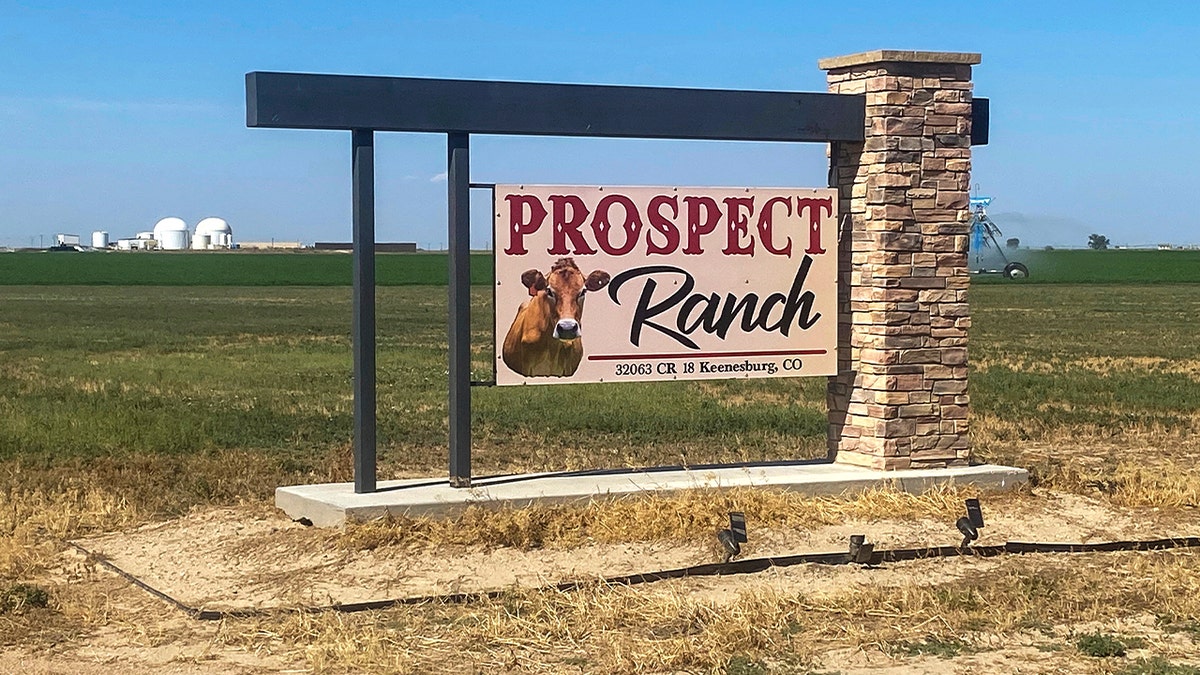Coroner identifies cause of death for 6 who collapsed at Colorado dairy farm – Fox News

Report on Fatal Industrial Accident at Colorado Dairy Farm and Implications for Sustainable Development Goals
1.0 Incident Summary
In August, a fatal incident occurred at the Prospect Ranch dairy farm near Keenesburg, Colorado, resulting in the deaths of six workers. Emergency services were dispatched to a “confined space” rescue where the individuals were discovered. The Occupational Safety and Health Administration (OSHA) has initiated an investigation into the circumstances surrounding the deaths.
2.0 Official Findings and Health Impacts
Autopsy and toxicology reports have confirmed that the cause of death for all six individuals was exposure to toxic hydrogen sulfide gas. This finding highlights critical failures in occupational safety and environmental health management, directly contravening the objectives of Sustainable Development Goal 3 (Good Health and Well-being).
2.1 Hazards of Hydrogen Sulfide
According to OSHA, hydrogen sulfide presents significant risks to human health:
- It is a colorless gas, often characterized by a sulfurous smell similar to rotten eggs.
- Exposure to very high concentrations can lead to immediate death.
- Survivors of significant exposure may experience long-term health consequences, including headaches and diminished attention span, which impedes progress toward ensuring healthy lives for all.
3.0 Victim Information
The deceased have been identified as five men and one teenager. The incident represents a profound human tragedy and a severe setback for ensuring safe working conditions.
- Ricardo Gomez Galvan
- Noe Montañez Casañas
- Carlos Espinoza Prado
- Jorge Sanchez Pena
- Alejandro Espinoza Cruz
- Oscar Espinoza Leos (age 17)
Several of the victims were related, underscoring the deep impact on their families and community.
4.0 Analysis in the Context of Sustainable Development Goals (SDGs)
This industrial accident represents a significant failure to uphold key principles outlined in the United Nations Sustainable Development Goals, particularly those related to labor, health, and responsible production.
4.1 SDG 8: Decent Work and Economic Growth
The incident is a direct violation of the principles of decent work.
- Target 8.8: This goal aims to “protect labour rights and promote safe and secure working environments for all workers.” The death of six individuals from an entirely preventable workplace hazard demonstrates a catastrophic failure to provide a safe working environment.
- The death of a 17-year-old worker highlights the particular vulnerability of young people in hazardous industries and the urgent need for enhanced protective measures.
4.2 SDG 3: Good Health and Well-being
The fatalities underscore a critical gap in public and occupational health protection.
- Target 3.9: This target calls for a substantial reduction in the “number of deaths and illnesses from hazardous chemicals and air, water and soil pollution and contamination.” The exposure to lethal hydrogen sulfide gas is precisely the type of event this SDG aims to eliminate through better regulation and safety protocols.
4.3 SDG 12: Responsible Consumption and Production
The incident raises questions about the sustainability and safety of production patterns in the agricultural sector.
- Target 12.4: This goal advocates for the “environmentally sound management of chemicals and all wastes throughout their life cycle…to minimize their adverse impacts on human health.” The generation of lethal gas as a byproduct of dairy operations points to a failure in managing industrial processes and waste in a manner that protects human life.
5.0 Institutional Response
The ongoing investigation by OSHA is a critical step toward accountability and falls under the purview of SDG 16 (Peace, Justice and Strong Institutions), which emphasizes the need for effective and accountable institutions to enforce laws and protect citizens. The findings of this investigation will be crucial for implementing corrective measures to prevent future tragedies and advance the goal of safe and decent work for all.
Analysis of Sustainable Development Goals in the Article
-
Which SDGs are addressed or connected to the issues highlighted in the article?
The article primarily addresses issues connected to the following Sustainable Development Goals (SDGs):
- SDG 3: Good Health and Well-being: This goal is central to the article, which reports on the death of six individuals due to exposure to a toxic substance. The incident directly relates to preventing deaths from hazardous chemicals and ensuring public health. The article states, “The six people who died at a Colorado dairy farm in August were exposed to toxic hydrogen sulfide gas,” highlighting a severe health and safety failure.
- SDG 8: Decent Work and Economic Growth: The tragedy occurred at a workplace—a dairy farm—and involved workers carrying out their duties. This connects the event to the promotion of safe and secure working environments, a key aspect of decent work. The investigation by the “Occupational Safety and Health Administration (OSHA)” underscores the focus on labor rights and workplace safety. Furthermore, the death of a minor, “Oscar Espinoza Leos, who was just 17 years old,” touches upon the issue of child labor and the protection of young workers.
-
What specific targets under those SDGs can be identified based on the article’s content?
Based on the article’s content, the following specific SDG targets can be identified:
-
Target 3.9: “By 2030, substantially reduce the number of deaths and illnesses from hazardous chemicals and air, water and soil pollution and contamination.”
The article directly relates to this target as it details the deaths of six people caused by “toxic hydrogen sulfide gas,” a hazardous chemical leading to fatal air contamination within a confined space. -
Target 8.8: “Protect labour rights and promote safe and secure working environments for all workers, including migrant workers, and in particular women migrants, and those in precarious employment.”
The incident is a clear example of a failure to provide a safe working environment. The deaths occurred during a “confined space” rescue at a dairy farm, which points to extremely hazardous working conditions. The investigation by OSHA is a direct reflection of the mechanisms in place to protect labor rights and safety. -
Target 8.7: “Take immediate and effective measures to eradicate forced labour, end modern slavery and human trafficking and secure the prohibition and elimination of the worst forms of child labour… and by 2025 end child labour in all its forms.”
This target is relevant because one of the victims was “Oscar Espinoza Leos, who was just 17 years old at the time of his death.” The death of a minor in a hazardous work environment directly pertains to the goal of eliminating the worst forms of child labor.
-
Target 3.9: “By 2030, substantially reduce the number of deaths and illnesses from hazardous chemicals and air, water and soil pollution and contamination.”
-
Are there any indicators mentioned or implied in the article that can be used to measure progress towards the identified targets?
Yes, the article contains information that can be used as data points for specific SDG indicators:
-
Indicator 3.9.3: “Mortality rate attributed to unintentional poisoning.”
The article provides a direct data point for this indicator by stating that the cause of death for the six individuals was exposure to “toxic hydrogen sulfide gas.” The autopsy and toxicology reports confirming this make the number of fatalities (six) a clear measure of mortality from unintentional poisoning in this specific incident. -
Indicator 8.8.1: “Fatal and non-fatal occupational injury rates, by sex and migrant status.”
The article explicitly reports on six workplace fatalities (“six dead in dairy accident”). This number directly contributes to the “fatal occupational injury rate.” The article identifies the victims as “five men and one teenager,” providing data on sex. - Implied Indicator for Target 8.7: While not a formal statistical indicator, the report of a 17-year-old dying in a hazardous work accident serves as a qualitative indicator of the persistence of child labor or, at a minimum, the engagement of young workers in dangerous occupations. The specific case of “Oscar Espinoza Leos” is a stark example that can be used to measure the effectiveness of policies designed to protect young workers from hazardous conditions.
-
Indicator 3.9.3: “Mortality rate attributed to unintentional poisoning.”
SDGs, Targets, and Indicators Summary
| SDGs | Targets | Indicators Identified in the Article |
|---|---|---|
| SDG 3: Good Health and Well-being | Target 3.9: Substantially reduce the number of deaths and illnesses from hazardous chemicals and pollution. | Indicator 3.9.3 (Mortality rate attributed to unintentional poisoning): The article reports six deaths resulting from exposure to “toxic hydrogen sulfide gas.” |
| SDG 8: Decent Work and Economic Growth | Target 8.8: Protect labour rights and promote safe and secure working environments for all workers. | Indicator 8.8.1 (Fatal and non-fatal occupational injury rates): The article documents six fatal occupational injuries in a single “confined space” accident at a dairy farm. |
| Target 8.7: Secure the prohibition and elimination of the worst forms of child labour. | Qualitative Indicator (Incidence of child labor in hazardous work): The death of a 17-year-old worker, Oscar Espinoza Leos, in a hazardous environment serves as a direct example. |
Source: foxnews.com
What is Your Reaction?
 Like
0
Like
0
 Dislike
0
Dislike
0
 Love
0
Love
0
 Funny
0
Funny
0
 Angry
0
Angry
0
 Sad
0
Sad
0
 Wow
0
Wow
0



















































.jpg.webp?itok=0ZsAnae9#)
























